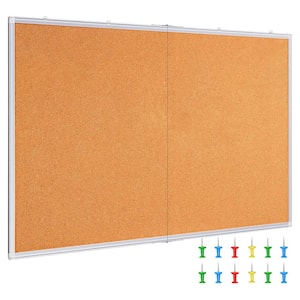
The initial post title is presented to you by a once-popular blogger. Lol? Apologies. Took a little break from blogging, but I’ve got what I believe is a solid tutorial for you! Who doesn’t adore some outdoor lighting, right?
After procrastinating for years, we at last installed some outdoor lights on our deck, and it. is. stunning. Not only that, but it’s incredibly simple and fairly affordable! That’s why I’m here. To share my outdoor lighting expertise.
Required Materials:
- A deck. This could be a patio, or perhaps a porch? A floor with one wall?
- String lights. I suggest something rugged to ensure better durability.
- Fence posts (ours are originally 12 feet, trimmed to 9 feet). I wasn’t able to find the exact one online, but I’ve linked a shorter alternative to the one we got.
- Small carabiners for each point of attachment to the house.
- Eye hooks for drilling into the wall.
- S hooks for each pole.
- Cordless drill.
- Hacksaw (if you need to shorten your fence posts).
- Zip ties (matching style) for your posts.
Alright, let’s start with the essentials. You’ll want to determine how you want your lights to be arranged. Zigzag, rectangular around your area? It’s completely your choice! I’m presenting you with some not-so-great photos of the actual materials I used.
There are indeed various methods for hanging the lights on the pole, but we chose to drill a tiny hole and insert the S hook into it. It appears to be holding (keeping in mind, there’s quite a bit of tension once they’re hung), so it seems effective!
Once we drilled holes into the poles and installed the S hooks, we secured them to our deck railing. Since our railings are metal, we couldn’t drill into them. Once again, taking a chance here—we opted to zip tie them to the railings. We used 18-inch industrial ties.
After trimming the ends, they’re hardly noticeable on the railing. Totally worth it, even if they are visible! 🙂
Then use the eye hooks to drill into your house (sounds more daunting than it actually is!).
Attach the carabiner to the eye hook, and then insert the light cord into the carabiner.
I recommend placing the hook quite high up. I’d suggest around 9 1/2 feet. You want to ensure a little space for the string lights to “swoop”, and you don’t want anyone bumping their heads.
Honestly, the trickiest aspect of this entire project is figuring out how to arrange the lights. I only had to reposition one hook after drilling it into the wall, and I didn’t mind too much. After all, people shouldn’t be inspecting your wall anyway!
Here you can see the transition from late afternoon to evening, to nighttime.
Va-Va-VOOM!
It’s been about 712 days since I last wrote a tutorial, so I apologize if I overlooked anything! Don’t hesitate to check out the video version of this on Instagram. I’ve saved it to my stories. Best of luck!
<!–
–>
**Installing Outdoor Lights: A Comprehensive Guide**
Outdoor illumination enhances the charm, security, and usage of your home’s exterior areas. Whether you’re looking to light up a pathway, showcase landscaping elements, or provide security lighting, setting up outdoor lights can be a fulfilling DIY task. Here’s an exhaustive guide to assist you in installing outdoor lighting successfully.
### Step 1: Design Your Lighting Plan
**Identify Your Requirements:**
– Decide what you want to achieve with your outdoor lights. Are you targeting visual appeal, safety, or utility?
– Pinpoint the spaces you wish to light, such as pathways, driveways, gardens, or patios.
**Select Appropriate Fixtures:**
– **Path Lights:** Best for walkways and garden paths.
– **Spotlights:** Ideal for emphasizing trees, shrubs, or architectural features.
– **Floodlights:** Provide extensive illumination for security reasons.
– **Wall Lights:** Improve the look and safety of entry areas.
**Think About Power Source:**
– **Wired Lighting:** Offers stable power but demands more installation work.
– **Solar Lighting:** Simple to install and environmentally friendly, though it relies on sun exposure.
– **Battery-Powered Lighting:** Versatile and easy to set up, but needs regular battery replacements.
### Step 2: Collect Required Tools and Materials
– Lighting fixtures
– Electrical wire (for wired systems)
– Transformer (for low-voltage setups)
– Wire connectors
– Drill and drill bits
– Screwdriver
– Shovel or trenching tool (for burying wires)
– Voltage tester (for safety inspections)
### Step 3: Install the Lighting
**For Wired Systems:**
1. **Layout the Wires:**
– Map the wire route from the power source to each light.
– Utilize a trenching tool to dig shallow paths for the wires.
2. **Set Up the Transformer:**
– Install the transformer close to a GFCI outlet.
– Connect the transformer to the power source according to the manufacturer’s guidelines.
3. **Attach the Fixtures:**
– Position the fixtures in the desired spots.
– Connect the fixtures to the wire using wire connectors.
4. **Verify the System:**
– Before burying the wires, check the system to ensure that all fixtures are functional.
5. **Bury the Wires:**
– After testing, bury the wires in the trenches and cover them with soil.
**For Solar or Battery-Powered Systems:**
1. **Place the Fixtures:**
– Position the fixtures in areas that receive sufficient sunlight for solar options.
– Ensure accessibility for battery replacements if using battery-operated lights.
2. **Secure the Fixtures:**
– Use stakes or mounts to fasten the fixtures securely.
3. **Test the Lights:**
– Activate the lights to confirm they are operating correctly.
### Step 4: Adjust and Maintain
– **Fine-Tune Angles:** Make sure the lights are angled properly to achieve the desired illumination.
– **Regular Upkeep:** Clean the fixtures periodically and check for any signs of damage or deterioration.
– **Replace Bulbs/Batteries:** Promptly replace any burnt-out bulbs or used batteries.
### Safety Precautions
– Always switch off the power at the circuit breaker prior to undertaking any electrical projects.
– Utilize a voltage tester to ensure wires are not live before handling them.
– Adhere to all manufacturer instructions for installation and safety.
By following these steps, you can successfully set up outdoor lighting that enhances the beauty and safety of your property. Whether you choose wired, solar, or battery-operated systems, careful planning and installation will guarantee your outdoor areas are well-lit and welcoming.




